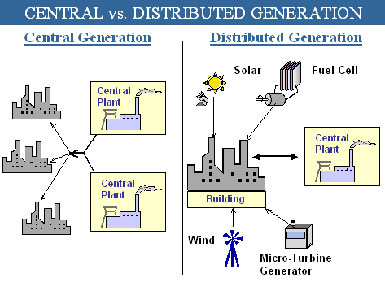Whether utilities, ALEC (and their coal/oil backers) like it or not, the world is moving to decentralized electricity.
Because of Western Europe’s supportive renewable energy policies, utilities there have been struggling the most, losing hundreds of billions of dollars in market capitalization. In the US, a battle is underway from the threatened industry trying to hold onto its centralized business model.
But change is underway, with distributed energy installations expected to grow from 87.3 gigawatts (GW) in 2014 to 165.5 GW in 2023, according to Navigant Research, with worldwide revenue growing from $97 billion in 2014 to more than $182 billion by 2023.
"One of the most important issues for the energy industry is striking a balance between distributed generation growth and fairly compensating utilities for the ability to effectively use the existing electrical grid as a backup service for onsite power at higher concentrations in the future," says Dexter Gauntlett, senior research analyst with Navigant Research. "Utilities that proactively engage with their customers to accommodate distributed generation – and even participate in the market themselves – limit their risk and stand to benefit the most."
By 2018, Navigant expects new distributed capacity additions worldwide to surpass new centralized ones, and by 2023, it will eliminate the need for at least 321 GW of new large-scale power plants. Extremely efficient diesel engines will dominate in the short term, followed by solar PV and natural gas.

Credit: Integrated Teaching and Learning Program, College of Engineering, University of Colorado Boulder
That’s What NRG is Doing
NRG Energy‘s latest initiative is a joint venture with another leader, Green Mountain Power of Vermont. They plan to make the city of Rutland an "Energy City of the Future," with intentions to spread the innovations state-wide.
Starting next year, they will begin "transforming the distribution grid from a 100-year-old electric delivery model to a market-based platform that creates efficiencies and distributed energy solutions through renewable technologies and energy storage," they say.
"Our customers consistently tell us they want tools to save money and move to renewable energy, and we can show the rest of the country how to get there," says Mary Powell, CEO of Green Mountain.
"We hope to demonstrate that investing in a 21st century energy ecosystem is more sustainable, resilient, affordable and individually empowering than pouring more investment into the creaky old grid infrastructure from the 20th century," remarks David Crane, NRG’s CEO. "In the course of so doing, we will prove the concepts of ‘electric utility’, ‘renewables’ and ‘personal choice’ are not mutually exclusive."
Their offerings aren’t new but combined, they make it easier for customers to generate and use renewable energy … and provide revenue opportunities for the two utilities.
- comprehensive personal energy management allows subscribers to track and remotely manage energy use in homes;
- expand and connect a network of electric vehicle charging stations across Vermont using NRG’s eVgo technology. Subscribers will find them at workplace and commercial locations;
- NRG is financing community solar arrays – its first, in Rutland, credits residential and business subscribers on their Green Mountain utility bill for their portion of electricity produced by solar – in exchange for a small fee.
- micro-generation solutions, such as NRG’s Beacon 10, which generates up to 10 kilowatts of electricity, provides water and space heating, and battery storage for onsite solar systems.
NRG leads on solar and wind, and recently spun off NRG Yield. Green Mountain Power’s "Cow Poop to Cow Power" is expanding across Vermont.
New York State is on the same track with its Reforming Energy Vision program, announced in May. No longer will utilities make money by selling more energy. Rather, revenue will come from helping customers use less energy, while "directing traffic" and "coordinating" thousands of small inputs to the grid.
Read our article, With Renewables Rising, Business Model Changing for Utilities.
